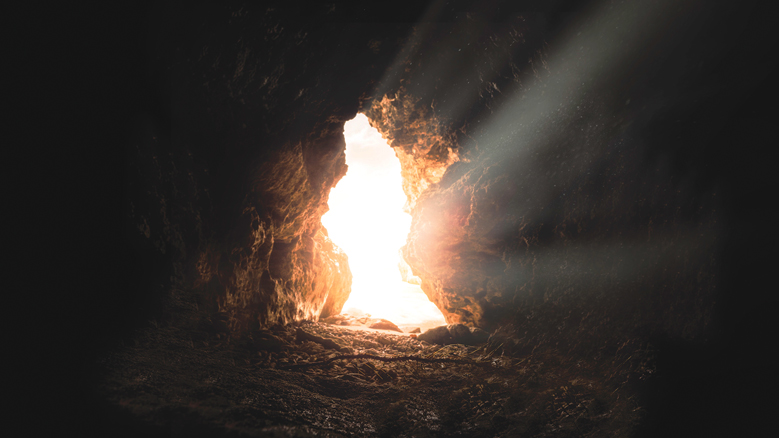At this time of year my thoughts always turn to Jesus’ death and resurrection. The theme is inescapable. I live in a temperate zone where trees are budding, bulbs are poking new green shoots from the soil, and flowers are beginning to bloom like tiny, shy harbingers of spring. I love butterflies and moths—they are another beautiful opening nature gives us to reflect on the transformational possibilities of resurrection. Those first few spring moths batting against my kitchen window in the dark on mild evenings send a little thrill of anticipation through me. The world is always new, always refreshing itself, always full of hidden potential just waiting to spring forth, even when it appears most lifeless.
During some springtimes, my life has been full of personal loss and grief—like the spring four years ago when my dad died. Still, the clear message of nature burgeoning around me has whispered the ancient truth of renewal, continuity, hope.
So many of us are grieving this spring; so many grappling for a handhold, a foothold, a way to understand what has happened to us. In our lives, we each have times when we are nailed by pain to crosses only we can name. Many of us now, like the disciples on the day following Jesus’ death, are grieving for a wounded and broken world, or feeling bereft and experiencing a terrible sense of loss. There are no easy answers, but there is much to consider.
David Johns, in "The Silence of Holy Saturday" (p.12), raises thoughtful concerns about the haste with which both hawks and doves responded to the attacks of September 11. "Holy Saturday is," he says, "a day of wondering, of anguish, of anger, of gnawing emptiness, of fear . . . a place in-between, a time of waiting, a time for tears, a space for grieving." Perhaps as we grapple with the Peace Testimony and its meaning for us in these days, perhaps as we seek ways to be practical idealists like Woolman or Gandhi or Martin Luther King Jr., perhaps we should allow ourselves plenty of time for that holy silence.
A year ago we published a group of articles focused on the suffering in the Middle East between Israelis and Palestinians. The intractable pain in which many in the Holy Land must live and endure evokes a sense of crucifixion in modern terms. While many readers appreciated those articles, some Friends rightly pointed out that our coverage articulated a Palestinian point of view, and did not give voice to an Israeli vantage point. While it is beyond the scope of Friends Journal to do justice to the intricacies of this conflict, we feel certain that its just and equitable resolution would do much to relieve the dangerous burden of resentment smoldering in that region—and would help peacemaking efforts elsewhere in today’s troubled world. In this issue we bring you Genie Durland’s "A Peacemaking Presence in a Troubled Land" (p. 17) and Jeff Halper’s "No Return to Oslo" (p. 22). The first of these reports on some efforts of Christian Peacemaker Teams in that region, and their work with many Israeli human rights and social justice groups, as well as with Palestinian peace groups. The second is written by an Israeli peace activist who founded Israelis Against Home Demolitions.
As we consider the painful conflicts in the Middle East and elsewhere during these difficult "in-between" times—which can stretch into years—it is helpful to remember that beyond the Crucifixion lies the amazing and astonishingly transformational power of the Resurrection. It takes courage and faith to hold onto that knowledge and hope during the dark and silent times. And yet isn’t it just such a transformation to which all of our efforts for peace and justice aspire?


